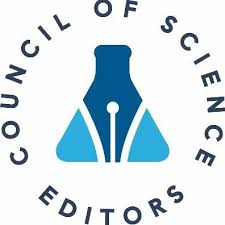|
3/2010
vol. 61
Quiz Correct answer to the quiz. check your diagnosis
Uterus-like mass
Online publish date: 2011/01/03
Get citation
Quiz
Correct answer to the quiz. check your diagnosis
Uterus-like mass
Uterus-like mass (ULM) reported also under a name of “endomyometriosis” or “metriosis” is a rare finding which was first described in 1981 [1]. It is supposed to be a special form of extrauterine adenomyoma macroscopically and microscopically imitating the uterus. Until now not more than 20 cases have been reported in the literature [2] – most of them were found in the region of the ovaries. Extraovarian cases have also been described [2, 3].
Uterus-like mass can be found incidentally, however most cases present with lower abdominal or pelvic pain [4, 5], sometimes accompanied by abnormal uterine bleeding [4, 6], weakness of the legs [7], vomiting or diarrhoea.
Macroscopically, this cystic lesion is often filled with hemorrhagic, dense, chocolate coloured or serous fluid.
Microscopically, the central cavity of the mass is lined by endometrium and surrounded by smooth-muscle bundles, resembling the structure of the uterine corpus. The endometrium may consist of small but well-organized endometrial glands within typical stroma or only a thin layer of endometrial stroma lined by pseudo-stratified columnar epithelium. In one case, well-developed secretory-phase endometrium was described [6]. A small amount of residual ovarian tissue can be seen within the mass [8]. Rare mitotic figures can be present in the endometrial-type stroma, but neither atypia nor necrosis is described either in the epithelial or mesenchymal component.
Immunohistochemical analysis demonstrates oestrogen and progesterone receptors immunoreactivity in nuclei of epithelial and stromal cells of endometrium and in some smooth muscle cells. Staining for CD10 is positive in endometrial stromal cells and smooth muscle actin (SMA) in spindle cells.
Uterus-like mass can be accompanied by uterine or renal system congenital anomalies [3, 7], however in most patients no such anatomic abnormalities were found. Some patients had an elevated CA125 level [8, 9].
Preoperatively, in the USG or MRI picture, ULM is sometimes considered malignant, suspicious for an endometrial stromal sarcoma or leiomyosarcoma, with central fluid-filled space interpreted as necrosis. Some ULM can also be misdiagnosed as ovarian endometriotic cyst or leiomyoma.
Histogenesis of ULM remains uncertain. Three different theories have been proposed. Uterus-like mass could be a congenital malformation caused by a defect in fusion of mullerian ducts [7]; it could be the effect of metaplastic transformation of subcelomic mesenchyme [10] or be due to heterotopia [3]. Most authors favour the first theory. Above all the most important information for the clinicians is that ULM is not a neoplasm. In most patients surgical removal of the mass was an adequate treatment. Two patients received GnRH agonist therapy in addition. References 1. Cozzutto C. Uterus-like mass replacing ovary. Arch Pathol Lab Med 1981; 105: 508-511.
2. Carinelli S, Motta F, Frontino G, et al. Multiple extrauterine adenomyomas and uterus-like masses: case reports and review of the literature. Fertil Steril 2009; 91: 1956e9-1956e11.
3. Menn KA, Qin L, Fedoriw GD, et al. Uterus-Like mass: MRI appearance of a very rare entity. j magnetic resonance imagine 2007; 26: 162-164
4. Peterson CJ, Strickler JG, Gonzalez R, et al. Uterus-like mass of the small intestin. Heterotopia or monodermal teratoma? Am J Surg Pathol 1990; 14: 390-394.
5. Matsuzaki S, Murakami T, Sato S, et al. Endomyometriosis arising in the uterosacral ligament: A case report including a literature review and immunohistochemical analysis. Pathol Internat 2000; 50: 493-496.
6. Jung WY, Shin BK, Kim IK. Uterine adenomyoma with uterus-like features. a report of two cases. Int J Surg Pathol 2002; 10: 163-166.
7. Pueblitz-Peredo S, Luevano-Flores E, Rincon-taracena R, et al. Uteruslike Mass of the Ovary: Endomyometriosis or Congenital Malformation? Arch Pathol Lab Med 1985; 109: 361-364.
8. Pai SA, Desai S, Borges AM. Uteruslike masses of the ovary associated with breast cancer and raised serum CA125. Am J Surg Pathol 1998; 22: 333-337.
9. Kim MJ, Seok SH. Uterus-like mass with features of an extrauterine adenomyoma: a case report and literature review. Korean J Pathol 2007; 41: 347-351.
10. Redman R, Wilkinson EJ, Massoll NA. Uterine-like mass withe features of an extrauterine adenomyoma presenting 22 years after total abdominal hysterectomy-bilateral salpingo-oophorectomy. Arch Pathol Lab Med 2005; 129: 1041-1043.
Address for correspondence
Magdalena Białas MD, PhD
Department of Pathomorphology
ul. Grzegórzecka 16
31-531 Kraków
fax +48 12 411 97 25
e-mail: mbialas7@gmail.com
The authors of correct diagnosis is:
Kamil Winnik MD, Janusz Korczak Memorial Provincial Specialist Hospital in Słupsk, Department of Pathomorphology, ul. Hubalczyków 1, 76-200 Słupsk
Copyright: © 2011 Polish Association of Pathologists and the Polish Branch of the International Academy of Pathology This is an Open Access article distributed under the terms of the Creative Commons Attribution-NonCommercial-ShareAlike 4.0 International (CC BY-NC-SA 4.0) License ( http://creativecommons.org/licenses/by-nc-sa/4.0/), allowing third parties to copy and redistribute the material in any medium or format and to remix, transform, and build upon the material, provided the original work is properly cited and states its license. |
|







